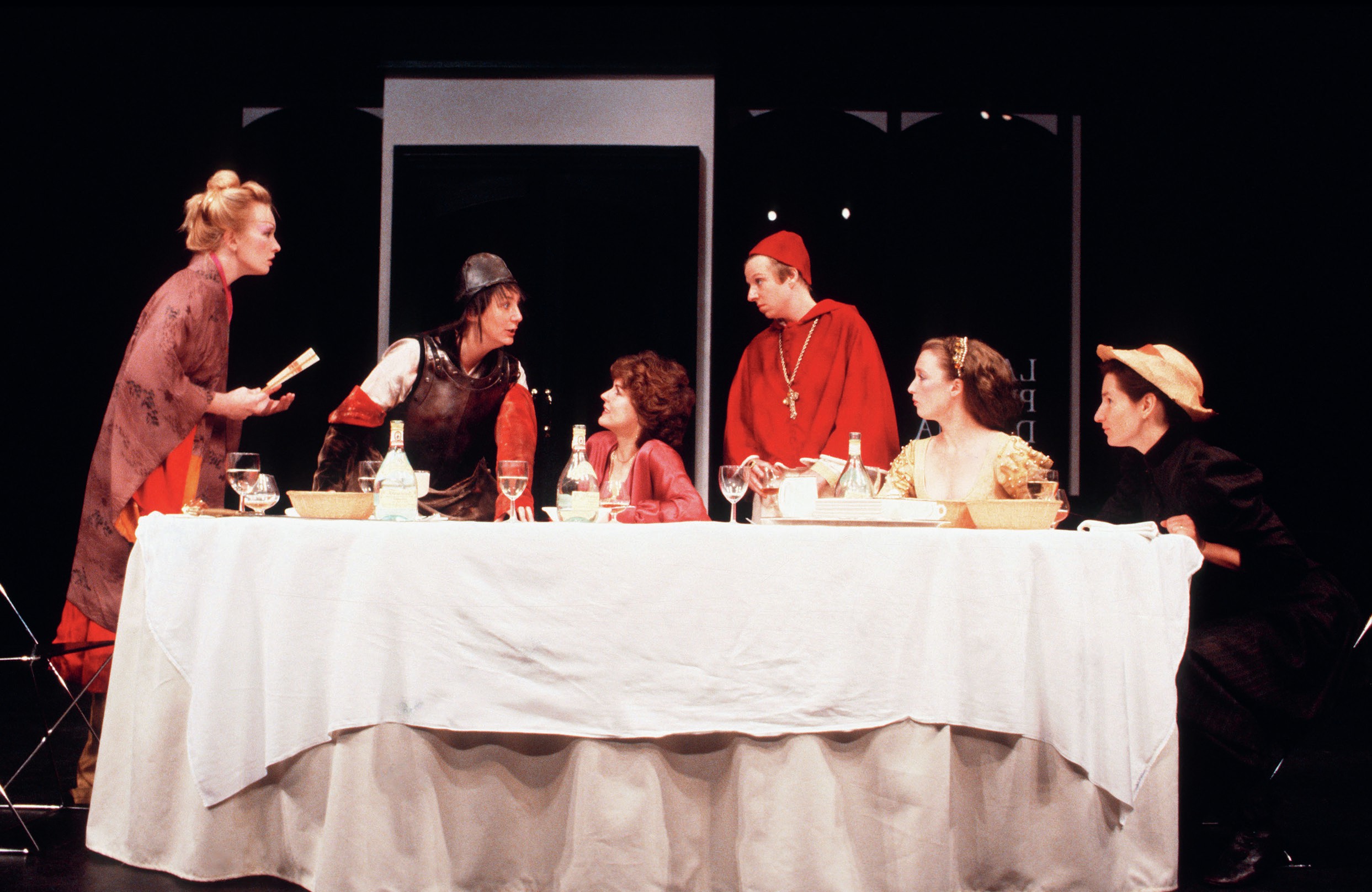
Since the beginning of the Women’s Liberation Movement in the UK in the 1970s, female playwrights and women’s theatre companies have been exploring how to express feminist politics through the medium of theatre. Some plays express their political messages directly: Strike While the Iron is Hot (1974) by Red Ladder Theatre dramatises a woman becoming aware of the gender pay gap and deciding to go on strike from the factory where she and her husband work.
Other feminist plays are more oblique, exploring the representation of women rather than directly tackling an issue. My Mother Said I Never Should (1987) by Charlotte Keatley stages the relationships between four generations of women and the shifts in the position of women over the twentieth century. It is also more experimental in style because of its disrupted chronology. Caryl Churchill’s Top Girls (1982) combines the formal experimentation of My Mother Said I Never Should with the political commitment of Strike While the Iron is Hot.
Your organisation does not have access to this article.
Sign up today to give your students the edge they need to achieve their best grades with subject expertise
Subscribe




